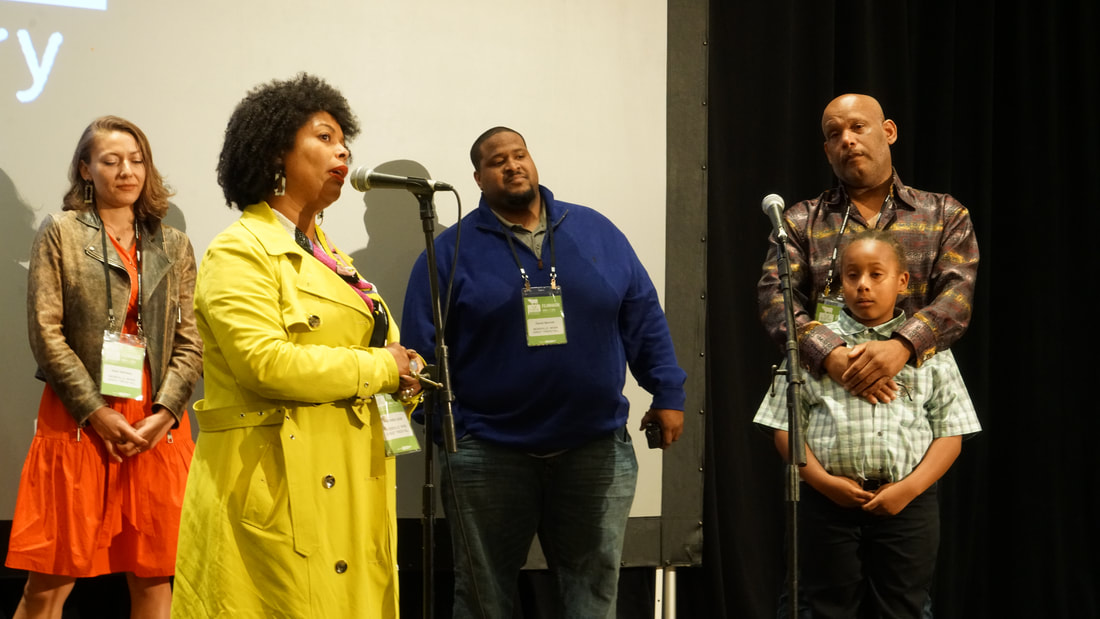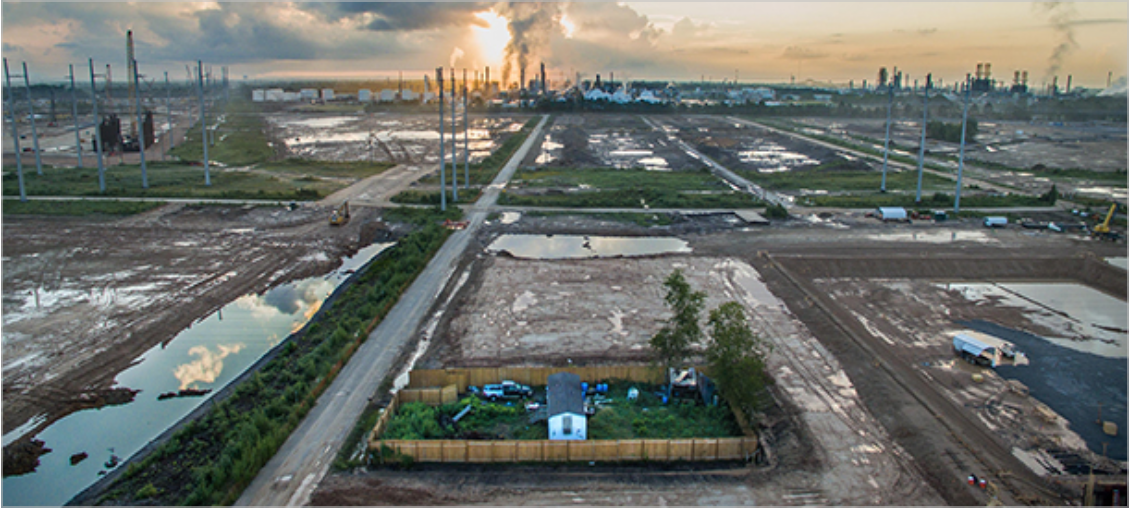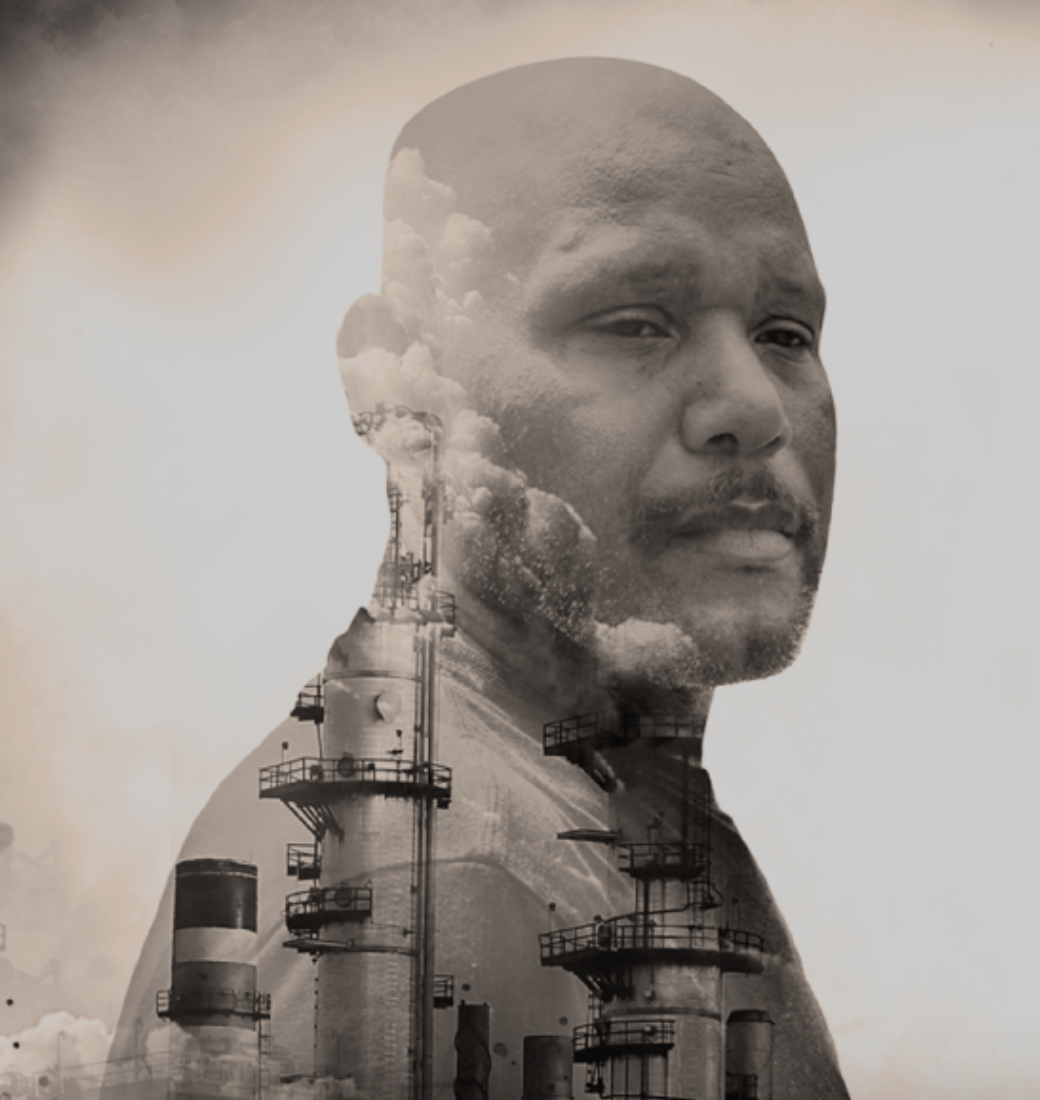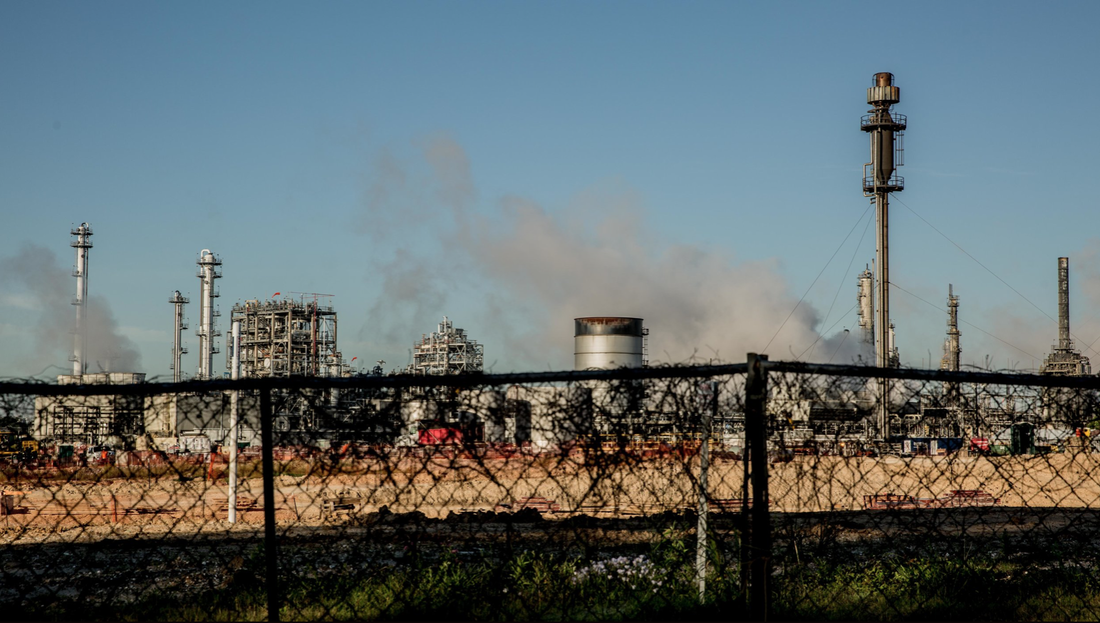'Mossville: When Great Trees Fall' exposes environmental racism that doomed historic Louisiana town4/25/2019 Documentary by Alexander Glustrom plays at Montclair Film Festival next weekend after Full Frame debut Not much remains of the town of Mossville, Louisiana, once a vibrant African-American community nestled in bayou country near Lake Charles. Only flat concrete foundations are left where homes used to stand. The faint echo of former civic life has been squelched by roaring bulldozers and dump trucks. "It's a historic black town. It's what I call 'oasis space,'" says Michelle Lanier, executive producer of Mossville: When Great Trees Fall, a new documentary that reveals what happened to the town and its residents. "It's a space where during Jim Crow segregation -- where catastrophic racial violence was a threat to all black lives all over the country but particularly in the deep South, in Louisiana -- these very brave formerly enslaved African-Americans had a vision to create community, to create schools and businesses and places of worship and for generations thrived." There have been a number of documented spills that have happened. There was a huge one in the 90s [with] ethylene dichloride... They found out it had been leaking for eight months into the groundwater. Mossville's ultimate undoing had something to do with geography. "It has access to a river which has access to the Gulf of Mexico... It also has a great rail system," notes Alexander Glustrom, director of the documentary, which just premiered at Full Frame in Durham, North Carolina. "It is an area that has all the things that they want." The 'they' Glustrom refers to are petrochemical giants like SASOL, a South African company, that have erected massive industrial plants in and around Mossville. When SASOL decided to build a multi-billion dollar operation in the area in 2012, the town -- historic or not -- was effectively in the way. SASOL went to work buying out homeowners, offering what it said were above market value prices. It was part of a seduction, Lanier asserts. "These companies that come in, they said, 'We will employ you and if we are going to build on land that you own you will make money because you're going to sell us your property and we know that these historical spaces are being impacted and we care about that so we're going to create a little museum and some publications to help tell that story because we have a conscience,'" Lanier recounts. "Meanwhile, people are not making anywhere near enough money off almost the forced sale of their property to buy anything approaching an equal kind of home life for generations of family." One resident, Stacey Ryan, refused to give up his tiny plot of land in Mossville, where he had grown up and where he was raising a son. "It's his form of activism... Just him being there and living is his resistance," Glustrom told me when we sat down at Full Frame. "At first he built a fence around his property to show them that he wasn't going to leave and then they cut him off all the utilities. They cut him off of sewer, water, electricity and he basically had to create a whole, self-sufficient little system within his property just so he could live there." That Ryan would want to keep living there speaks to the primacy of place in forming our identities -- the deep roots alluded to in the film's subtitle. Because, in truth, there is every reason to want to leave, if home exerted no gravitational pull. Mossville may have been a bucolic refuge in the early 20th century, but it metastasized into something else when the chemical plants began moving in in the 1940s, spewing poisons into the ground and the air. The people in Mossville and nearby communities have suffered dearly from that proximity. "There have been a number of documented spills that have happened. There was a huge one in the 90s [with] an ethylene dichloride spill," Glustrom comments. "Ethylene dichloride is a carcinogen and it actually got into the groundwater and this is at a time where most Mossville families had wells in their yards where they pulled water from the ground and so they watered their gardens with this water, they grew their food in this ground and they digested these chemicals." We were there for a couple of explosions where the sky is full of black smoke and these chemicals are in the air and there would be a 'shelter in place' warning. The environmental dangers didn't end there, Glustrom says. "There's releases [of chemicals] in the air that happen constantly. When you go there you can smell it, you feel it. When our team would go there we would get sick. Members of our team would often get bloody noses and would have lots of issues just being there. Then there's also explosions that happen. And then there's releases that happen there. We were there for a couple of explosions where the sky is full of black smoke and these chemicals are in the air and there would be a 'shelter in place' warning." Glustrom continues, "A lot of these chemicals affect the reproductive systems of the women. So there's really high rates of endometriosis. There's really high rates of birth defects. There's a cluster of babies that were born without brains... There's also just really high cancer rates, even what they call 'chemical diabetes' they trace back to these chemicals that people are breathing in and ingesting. Our main character [Stacey], he's lost almost his entire family to cancer and every single Mossville resident has family members that they've lost, if they haven't themselves had to suffer from cancer." Ryan's own health is precarious. "When I first met him his health wasn't good and we watched it slowly deteriorate," Glustrom reveals. "He struggles to this day." It appeared Ryan's health would not permit him to attend the premiere at Full Frame, but he rallied sufficiently to make the trip to North Carolina with his son Andre. As compelling as Ryan's story is and that of his neighbors and their community, the filmmakers see Mossville as being about much more than a single town and its people. It's about "fence line" communities everywhere where the disenfranchised live next to industrial plants. They struggle to exist at the whim of the powerful. The filmmakers got a glimpse of this phenomenon when they shot footage in Secunda, South Africa, where SASOL operates a huge plant that turns coal into synthetic fuel. "This is an international issue... It's the global south. Our team went to South Africa and said, 'This virtually looks the same.' And it has roots in both apartheids -- the American South apartheid and the South African apartheid," Lanier observes. She adds, "The repercussions of this kind of industrialized white supremacist extractive practice -- it is a machine that is mammoth, but it is not bigger than the human spirit. It's not." SASOL, according to the filmmakers, was not willing to participate in the documentary. "There response has been to not grant any requests for interviews, as much as we've tried," Glustrom says. He accuses SASOL of attempting "to intimidate us and to follow us around every time we're in Louisiana. We have been detained by security officers who then call police officers and it's been a constant intimidation that they've done to us while we've been filming." It's significant to point out that SASOL was courted to set up shop in Louisiana by Bobby Jindal, the state's Republican governor from 2008-2016. And the company insists its property purchase program in Mossville was and is entirely voluntary. "The offers typically amount to the appraised value of the property plus 40-60 percent," SASOL writes on its North America website. "For owner-occupied homes appraised at less than $100,000, the 60-percent markup is added to a minimum value of $100,000. Other allowances and bonuses are available to help ease the burden of relocation." The company further states, "Sasol is proud of our engagement with our neighbors in Mossville, Louisiana, a community west of our Lake Charles Chemical Complex. From the early stages of our ethane cracker and derivatives project, we've continually reached out to Mossville residents to keep them informed of our plans and solicit their input on what we can do to make a positive difference in their community. The result is an extensive, ongoing partnership between Sasol and Mossville to address their desires, give them the choices they asked for, and provide sustainable, long-term support to increase economic opportunities." SASOL's footprint in the Mossville area is only growing larger. "Sasol is constructing a world-scale petrochemical complex near the Lake Charles Chemical Complex," the company states. "The project will roughly triple the company's chemical production capacity in the U.S. and enable it to build on its strong positions in robust and growing chemical markets." To the creators of the documentary, the tale of Mossville is one of environmental racism. "'Environmental racism' is a really important phrase and it was actually born in eastern North Carolina as black people were resisting the placement of dumps and chemical sites," Lanier affirms. "This notion of valuing black and brown bodies less than white bodies." She says a petrochemical plant would never be erected near an enclave of wealthy white people -- an opinion no sensible person would dispute. "People of wealth and privilege can go to their friend who's sitting on the zoning committee and who's in the register of deeds -- those networks are very, very tied and they're deep and they're generational -- to say, 'No, no, no, not near my gated community. Not near my golf course. Not near my child's private school. Go put it over there. Those black folks, they live in poverty. How they live is kind of an eyesore anyway, wouldn't it be great, let's just put it there where we don't have to see it and smell it.'" Glustrom adds, "You'll find that every single [industrial] plant across the country you'll find communities of color that are the fence line communities." Mossville: When Great Trees Fall screens next at the prestigious Montclair Film Festival in New Jersey, playing Saturday, May 4 and Sunday, May 5. Theatrical distribution plans have yet to be determined. "I think in the next six to eight months we'll start looking at getting DVD's out there and definitely for libraries," Lanier tells Nonfictionfilm.com. "We want to work with other environmental justice and social justice organizations to use this as a tool for engagement and advocacy." In the meantime, the director and producers are basking in the glow of a successful appearance at Full Frame, where the documentary won a special award for human rights. "It feels amazing. It's indescribable," Glustrom offers. "The award obviously means a lot to us, it means a lot to our characters, our whole producing team. But honestly the award, the sold-out screening, the encore screening, nothing can compare to having our main character walk on stage to a standing ovation [Saturday]. I mean, that was just a high of this entire process for us."  Michelle Lanier, executive producer of "Mossville: When Great Trees Fall," speaks at a Q&A following the premiere of the documentary at Full Frame. Behind her are producers Kate Mathews and Daniel Bennett; at far right is main character Stacey Ryan with his son Andre. April 6, 2019. Photo by Matt Carey |
AuthorMatthew Carey is a documentary filmmaker and journalist. His work has appeared on Deadline.com, CNN, CNN.com, TheWrap.com, NBCNews.com and in Documentary magazine. |
- Home
- News
- Videos
-
Galleries
- 2019 Tribeca Film Festival
- Full Frame Documentary Film Festival
- 2019 SXSW Film Festival
- SXSW 2018 Gallery
- 2019 Sundance Film Festival
- Outfest 2018 Photo Gallery
- Outfest 2017
- Sundance 2018 Photos
- 2017 LA Film Festival
- 2017 Cannes Film Festival
- Tribeca Film Festival 2017
- SXSW 2017 Gallery
- 2017 Berlin Film Festival
- Sundance 2017 Gallery
- 2016 Los Angeles Film Festival
- Cannes Film Festival 2016
- SXSW 2016 Gallery
- Berlinale 2016 Gallery
- Sundance 2016 Gallery
- Filmmaker Gallery
- About
- Contact
Proudly powered by Weebly
- Home
- News
- Videos
-
Galleries
- 2019 Tribeca Film Festival
- Full Frame Documentary Film Festival
- 2019 SXSW Film Festival
- SXSW 2018 Gallery
- 2019 Sundance Film Festival
- Outfest 2018 Photo Gallery
- Outfest 2017
- Sundance 2018 Photos
- 2017 LA Film Festival
- 2017 Cannes Film Festival
- Tribeca Film Festival 2017
- SXSW 2017 Gallery
- 2017 Berlin Film Festival
- Sundance 2017 Gallery
- 2016 Los Angeles Film Festival
- Cannes Film Festival 2016
- SXSW 2016 Gallery
- Berlinale 2016 Gallery
- Sundance 2016 Gallery
- Filmmaker Gallery
- About
- Contact






 RSS Feed
RSS Feed